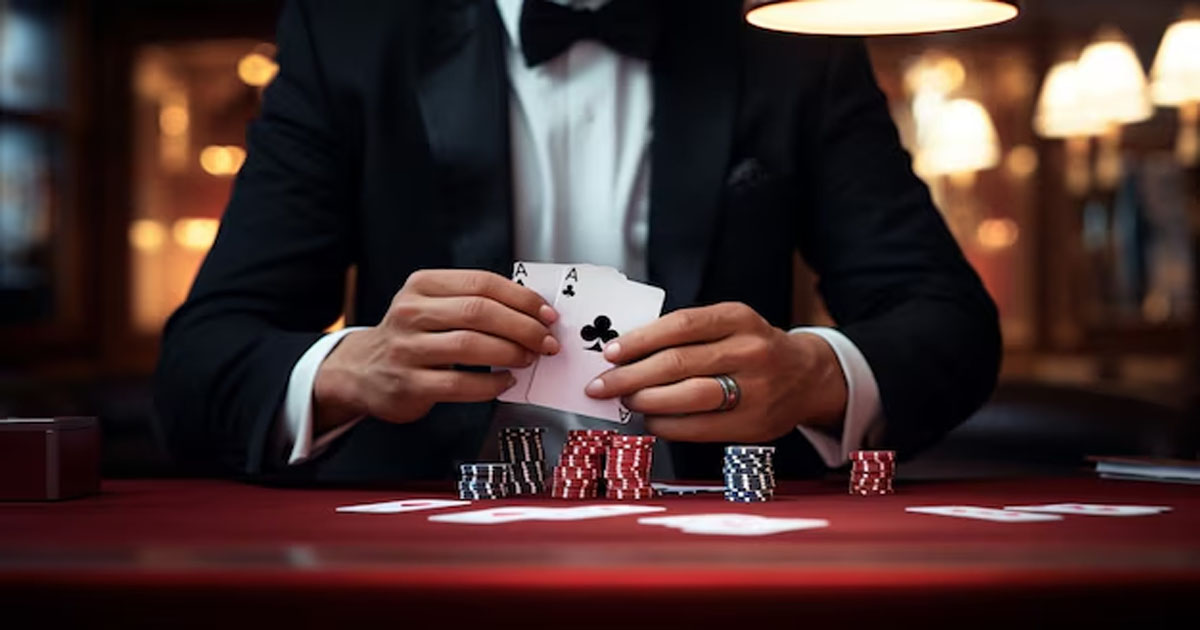Blackjack, often known as 21, is a popular casino game where strategic decisions can make a big difference in your chances of winning. One of the most common scenarios you might face is when the dealer shows a 5, and you hold two tens. This situation is critical because it involves a crucial decision that can impact your overall strategy. In this article, we’ll explore the optimal strategy for this scenario, discuss the rationale behind it, and provide tips for making the most of your hand.
Understanding the Basics of Blackjack
The Objective of Blackjack
The primary goal in blackjack is to have a hand value as close to 21 as possible without exceeding it. Each card has a specific value: numbered cards are worth their face value, face cards (kings, queens, jacks) are worth 10, and aces can be worth either 1 or 11.
How the Dealer’s Upcard Affects Strategy
The dealer’s upcard plays a significant role in shaping your strategy. The dealer’s card indicates their potential hand value and helps you determine the best course of action. When the dealer shows a 5, it’s essential to consider their likelihood of busting, which influences your decision.
The Scenario: Dealer Shows a 5, You Have Two Tens
What Does the Dealer’s 5 Mean?
A dealer showing a 5 is often considered a weak position. This is because the dealer is likely to end up with a total hand value between 12 and 16, which puts them at risk of busting when they draw additional cards. Dealers must hit until they reach at least 17, so a 5 as their upcard means they have a higher chance of busting.
Your Hand: Two Tens
Having two tens gives you a total hand value of 20. This is an excellent hand, as it’s only one point shy of 21. With this strong hand, you’re in a favorable position and want to make sure you maximize your chances of winning.
Optimal Strategy for Two Tens Against a Dealer’s 5
Stand
In this situation, the optimal move is to stand. Here’s why:
- High Hand Value: A total of 20 is a very strong hand and gives you a high probability of winning if you stand. Only a total of 21 would be better, which is not possible with your current cards.
- Dealer’s Weak Card: With a 5 showing, the dealer is more likely to bust, as they will need to draw additional cards and may end up with a total value over 21. By standing, you avoid the risk of busting yourself.
Why Not Split or Double Down?
- Splitting: Splitting two tens is not advisable. Splitting would leave you with two separate hands, each starting with a ten, which would significantly reduce your chances of getting a strong hand in either case. Your current hand of 20 is stronger than any potential outcome from splitting.
- Doubling Down: Doubling down is not appropriate here because it involves increasing your bet with the hope of improving your hand. Since you already have a strong hand (20), doubling down would not provide additional benefit and would increase your risk unnecessarily.
Practical Tips for This Scenario
Avoid Risky Moves
When you have a total of 20, avoid making risky moves like hitting, splitting, or doubling down. The risk of busting or reducing your strong hand outweighs the potential benefits.
Understand the Dealer’s Position
Keep in mind the dealer’s upcard and their likelihood of busting. A dealer showing a 5 is in a weak position, so your strategy should focus on protecting your strong hand.
Practice Makes Perfect
Familiarize yourself with different scenarios and practice your strategy. Understanding the best moves for various dealer upcards can enhance your overall blackjack skills and improve your chances of winning.
Conclusion
In summary, when the dealer has a 5 and you hold two tens, the optimal strategy is to stand. This approach leverages the strength of your hand and considers the dealer’s likelihood of busting. By following this strategy, you maximize your chances of winning and avoid unnecessary risks. Blackjack is a game of both skill and luck, so understanding the right moves in different scenarios can make a significant difference.
FAQs
1. Why is standing the best move with two tens?
Standing is the best move because you have a strong hand value of 20. Attempting to improve this hand further by hitting or splitting is risky and unnecessary.
2. What are the chances of the dealer busting with a 5?
The dealer has a higher chance of busting with a 5 because they must draw additional cards to reach at least 17. They are more likely to end up with a total over 21.
3. Can I use the same strategy if the dealer’s upcard is different?
No, the strategy may vary depending on the dealer’s upcard. For example, different upcards may require hitting, doubling down, or other adjustments to your strategy.
4. What is the best strategy if the dealer shows an ace?
If the dealer shows an ace, it’s typically advised to use strategies like basic blackjack strategy charts, which may involve hitting, doubling down, or standing based on your hand value and the dealer’s potential hand.
5. How can I practice blackjack strategy?
You can practice blackjack strategy by playing free online blackjack games, using strategy charts, or visiting a casino with low-stakes tables. Practice helps you become more familiar with different scenarios and improve your decision-making skills.














Leave a Reply